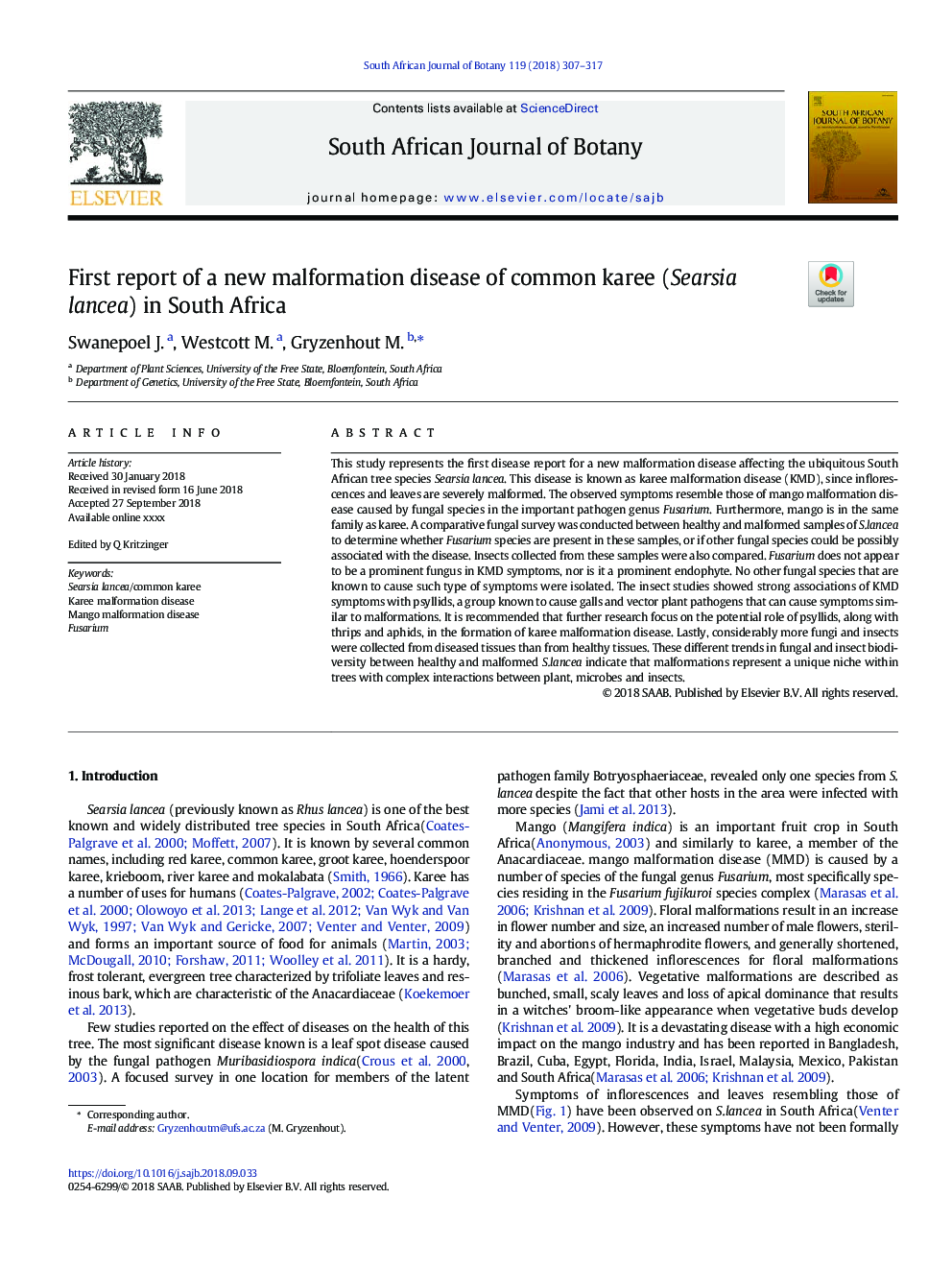| Article ID | Journal | Published Year | Pages | File Type |
|---|---|---|---|---|
| 11263890 | South African Journal of Botany | 2018 | 11 Pages |
Abstract
This study represents the first disease report for a new malformation disease affecting the ubiquitous South African tree species Searsia lancea. This disease is known as karee malformation disease (KMD), since inflorescences and leaves are severely malformed. The observed symptoms resemble those of mango malformation disease caused by fungal species in the important pathogen genus Fusarium. Furthermore, mango is in the same family as karee. A comparative fungal survey was conducted between healthy and malformed samples of S.lancea to determine whether Fusarium species are present in these samples, or if other fungal species could be possibly associated with the disease. Insects collected from these samples were also compared. Fusarium does not appear to be a prominent fungus in KMD symptoms, nor is it a prominent endophyte. No other fungal species that are known to cause such type of symptoms were isolated. The insect studies showed strong associations of KMD symptoms with psyllids, a group known to cause galls and vector plant pathogens that can cause symptoms similar to malformations. It is recommended that further research focus on the potential role of psyllids, along with thrips and aphids, in the formation of karee malformation disease. Lastly, considerably more fungi and insects were collected from diseased tissues than from healthy tissues. These different trends in fungal and insect biodiversity between healthy and malformed S.lancea indicate that malformations represent a unique niche within trees with complex interactions between plant, microbes and insects.
Keywords
Related Topics
Life Sciences
Agricultural and Biological Sciences
Agronomy and Crop Science
Authors
Swanepoel J., Westcott M., Gryzenhout M.,
